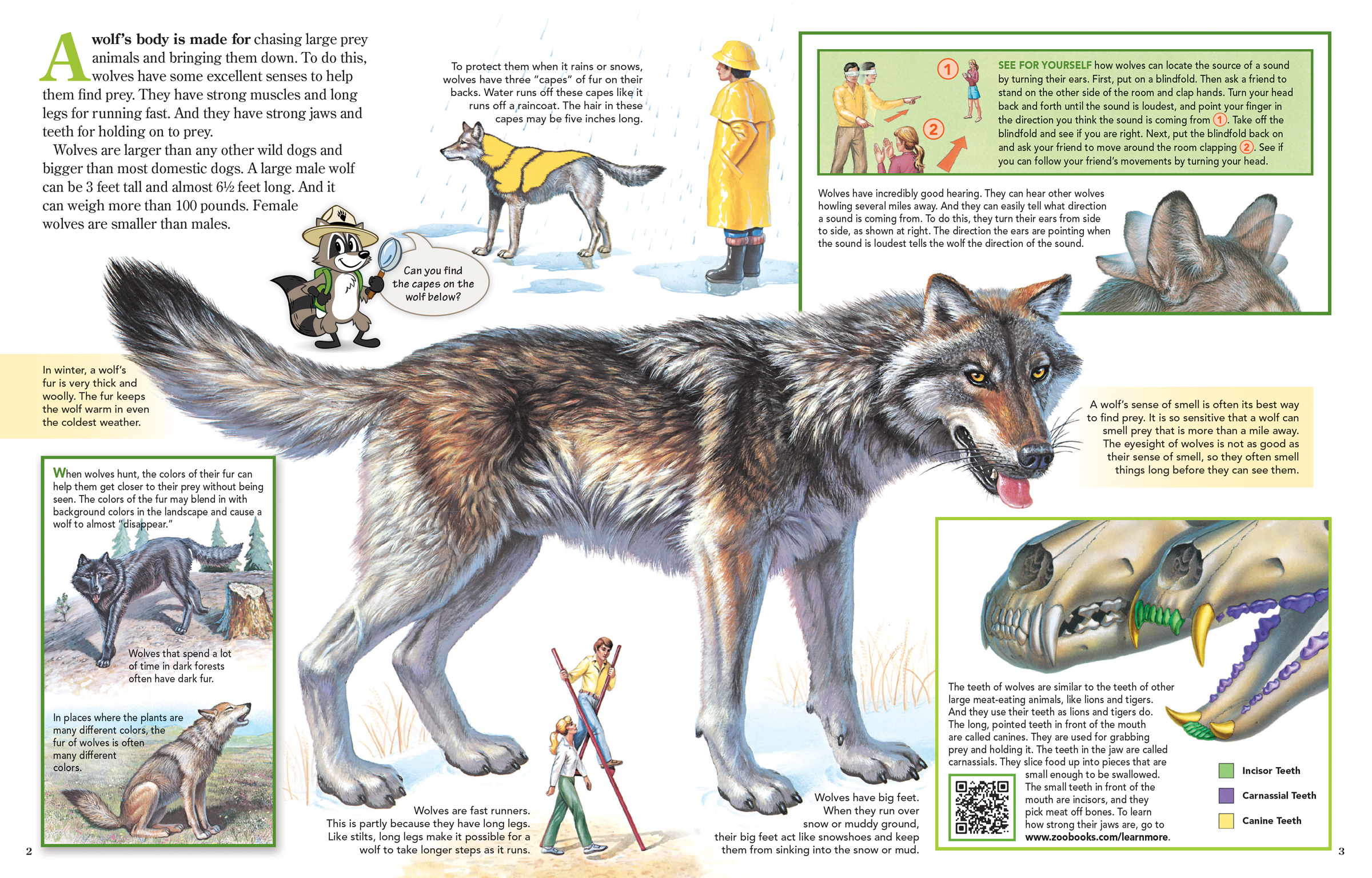
A Wolf’s Body is Made for Chasing Large Prey
ByA wolf’s body is made for chasing large prey animals and bringing them down. To do this, wolves have some excellent senses to help them find prey. They have strong muscles and long legs for running fast. And they have strong jaws and teeth for holding on to prey.
Wolves are larger than any other wild dogs and bigger than most domestic dogs. A large male wolf can be 3 feet tall and almost 6½ feet long. And it can weigh more than 100 pounds. Female wolves are smaller than males.
To protect them when it rains or snows, wolves have three “capes” of fur on their backs. Water runs off these capes like it runs off a raincoat. The hair in these capes may be five inches long.
Can you find the capes on the wolf below?
In winter, a wolf’s fur is very thick and woolly. The fur keeps the wolf warm in even the coldest weather.
When wolves hunt, the colors of their fur can help them get closer to their prey without being seen. The colors of the fur may blend in with background colors in the landscape and cause a wolf to almost “disappear.”
Wolves that spend a lot of time in dark forests often have dark fur.
In places where the plants are many different colors, the fur of wolves is often many different colors.
Wolves are fast runners. This is partly because they have long legs. Like stilts, long legs make it possible for a wolf to take longer steps as it runs.
SEE FOR YOURSELF how wolves can locate the source of a sound by turning their ears. First, put on a blindfold. Then ask a friend to stand on the other side of the room and clap hands. Turn your head back and forth until the sound is loudest, and point your finger in the direction you think the sound is coming from 1. Take off the blindfold and see if you are right. Next, put the blindfold back on and ask your friend to move around the room clapping 2. See if you can follow your friend’s movements by turning your head.
Wolves have incredibly good hearing. They can hear other wolves howling several miles away. And they can easily tell what direction a sound is coming from. To do this, they turn their ears from side to side, as shown at right. The direction the ears are pointing when the sound is loudest tells the wolf the direction of the sound.
A wolf’s sense of smell is often its best way to find prey. It is so sensitive that a wolf can smell prey that is more than a mile away. The eyesight of wolves is not as good as their sense of smell, so they often smell things long before they can see them.
Wolves have big feet. When they run over snow or muddy ground, their big feet act like snowshoes and keep them from sinking into the snow or mud.
The teeth of wolves are similar to the teeth of other large meat-eating animals, like lions and tigers. And they use their teeth as lions and tigers do. The long, pointed teeth in front of the mouth are called canines. They are used for grabbing prey and holding it. The teeth in the jaw are called carnassials. They slice food up into pieces that are small enough to be swallowed. The small teeth in front of the mouth are incisors, and they pick meat off bones.

